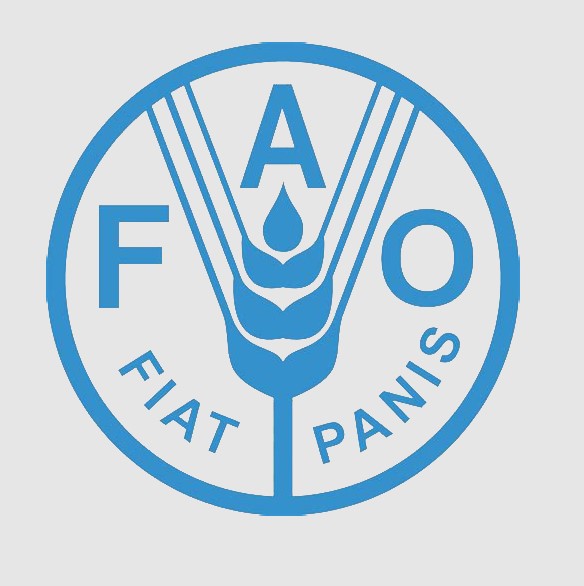EPA and DHA Omega 3’s intake will soon have its daily intake recommendation issued by CODEX, and with it, a strong push for its final positioning as a relevant nutrient for human health.
The main conclusions suggest that increased consumption of EPA and DHA Omega-3 fatty acids from fish or fish oil supplements reduce the rates of CVD-related deaths, cardiac and sudden death, and possibly stroke, and that a sufficient intake of EPA and DHA is important for good health.
The bulk of the scientific evidence is now pointing towards not so much optimal ratios of dietary EPA and DHA Omega-3 and n-6 fatty acids, but rather towards the absolute intakes of specific Omega-3 and n-6 PUFAs that are associated with many different endpoints and health outcomes, such as CHD, mental health or immune/inflammatory responses (Deckelbaum and Calder, 2010).
The 36th Session 2014 of the Codex Committee on Nutrition and Foods for Special Dietary Uses (CCNFSDU) agreed to recommend new work to develop and add a potential new Codex nutrient reference value (NRV) to docosahexaenoic acid (DHA) and eicosapentaenoic acid (EPA) intended for the general population for labelling purposes in relation to the risk of Non-Communicable Diseases (NCDs).
The project document for the new work will be considered for approval by the Codex Alimentarius Commission in the 38th session, in July 2015.
When analyzing the data supporting a positive effect on health (thrombosis risk, arrhythmia risk, post heart attack, better cardiovascular rate including sudden death from arrhythmias) it may be considered that the omega 3 fatty acid of 18 carbon atoms 18:3 n-3 (alpha-linolenic acid) is precursor to form EPA and DHA. Similarly, EPA 20:5 n-3 serves as precursor in DHA 22:6 n-3 formation. Nevertheless, this conversion is limited and variable. Therefore, the effects of diet or supplement contributions rich in omega 3 fatty acids will depend on how each individual is able to form more or less amount of active compounds (EPA and DHA). This makes the data combination of diverse studies difficult, and weakens the evidence, which must be judged in a global way. For this reason, this review will be focused on the evidence available for health effects of EPA and DHA specifically.
The Committee accepted the six listed scientific bodies as RASB (Recognized Authoritative Scientific Body) when analyzing EPA and DHA intake references;
- European Food Safety Authority (EFSA);
- United States Institute of Medicine (IOM);
- Australian National Health and Medical Research Council & New Zealand Ministry of Health(NHMRC/MOH);
- Japanese National Institute of Health and Nutrition (NIHN);
- International Zinc Nutrition Consultative Group (IZiNCG);
- Nordic Council of Ministers (Nordic countries).
The report concludes that there are convincing associations for reduced risk of CVDs including consumption of fruits and vegetables, fish and fish oils (EPA and DHA), foods high in linoleic acid and potassium, as well as physical activity and low to moderate alcohol intake.
With respect to the nutritionally important fatty acids, the report states that the most important Omega-3 (PUFAs) are EPA and DHA found in fatty fish.
Joint FAO/WHO Expert Consultation on Fats and Fatty Acids in Human Nutrition, 10–14 November 2008, WHO HQ, Geneva, experts concluded that there is “convincing” evidence of reduced risk of fatal CHD events for EPA and DHA and a level of evidence of “possible” for reduction of risk of CHD events and stroke. For adult males and non-pregnant/non-lactating adult females, 0.250 g/day of EPA plus DHA is recommended, with insufficient evidence to set a specific minimum intake of either EPA or DHA alone; both should be consumed.
Joint FAO/WHO Expert Consultation on the risks and benefits of fish consumption, 25–29 January 2010, Rome, evidence was found convincing that fish consumption lowers mortality from coronary heart disease in the general population. The conclusions also stated that moderate consumption of fatty fish (one or two 100 g servings per week) would provide maximum benefit (two servings provide about 250 mg EPA + DHA).
European Food Safety Authority (EFSA) concluded that intervention studies have demonstrated beneficial effects of EPA and DHA on recognized cardiovascular risk factors, such as a reduction of plasma triacylglycerol concentrations, platelet aggregation and blood pressure. These effects were mainly observed at intakes ≥ 1 g/day. With respect to cardiovascular diseases, prospective epidemiological and dietary intervention studies indicate that oily fish consumption or Omega-3 LCPUFA dietary supplements (equivalent to a range of 250–500 mg of EPA plus DHA daily) decrease the risk of mortality from CHD and sudden cardiac death. An intake of 250 mg per day of EPA plus DHA appears to be sufficient for primary prevention in healthy subjects. EFSA Panel set an Adequate Intake (AI) of 250 mg for EPA plus DHA in adults considering cardiovascular health.
Norwegian Scientific Committee for Food Safety/ Nordic Council of Ministers, makes important observations on the positive health effects of DHA and EPA in relation to cardiovascular diseases, considerations on adequate intakes of omega 3 fatty acids should be specific to EPA and DHA; it is not possible to distinguish the health effects of EPA and DHA consumed as triacylglycerol (TAG) or as ethyl esters; oily fish consumption (1–2 servings per week or dietary supplements containing EPA and DHA and equivalent to a range of 0.25 to 0.5 g of EPA and DHA daily) decrease the risk of mortality from coronary heart disease and sudden cardiac death.
Australian and New Zealand Health Authorities (2006): National Health and Medical Research Council and New Zealand Ministry of Health (NHMRC/MOH), for men and women (19+ years) a recommendation of 160 mg and 90 mg, respectively, of total-Omega-3 (DHA + EPA + DPA) was made for an adequate intake. The suggested dietary target to reduce chronic disease risk was 610 mg and 430 mg, respectively, for DHA + EPA + DPA per day.
The recommendation to lower the risk of CHD is that all adult Australians should consume about 500 mg/day of combined DHA and EPA through a combination of the following:
• 2 or 3 servings/ per week (150 g servings) of oily fish
• Fish oil capsules or liquid
United States Institute of Medicine (2005) Institute of Medicine of the National Academies. Dietary Reference Intakes of energy, carbohydrate, fiber, fat, fatty acids, cholesterol, protein and amino acids. 2005, the United States Institute of Medicine (IOM) made DHA and EPA intake recommendations for adult men and women (+19 years old) of 10% of total omega-3 intake (1.6 g and 1.1 g/day, respectively). i.e. 160 mg/day and 110 mg/day.
In terms of safety of consumption, the primary concerns with regard to the safety of DHA and EPA are its effects on glycaemic control in diabetes, reduced platelet aggregation/increased bleeding time and adverse immunological effects (EFSA, 2012), long-term human intervention studies that have investigated diverse health results and the effects of supplemental intakes of EPA and DHA, either alone or in combination, at amounts up to about 1 g/day on a variety of health outcomes (e.g. cardiovascular, neurological, immunological), have generally reported no adverse effects in relation to the consumption of EPA or DHA at these levels of intake.
Regarding the risk of mercury contamination, consumption of fish raises the issue of human exposure to methyl mercury, a toxic form of mercury found in long-lived predators and fish at the top of the food chain, such as king mackerel, swordfish, shark, tilefish and albacore tuna. Although public health advice has been given for women who may become pregnant and for pregnant women, nursing mothers and young children to avoid certain types of fish potentially high in mercury, risk-benefit analyses indicate that lowering fish consumption would have serious public health consequences (Cohen et al., 2005; Mozaffarian and Rimm, 2006; Wennberget al, 2012; Hughneret al., 2012; European Food Safety Authority, 2014). The messages about fish consumption should therefore not discourage individuals from eating fish (FDA EE.UU., 2014).
This project document can be reviewed at 1st Consultation Document on EPA+DHA NRV’s(F)








